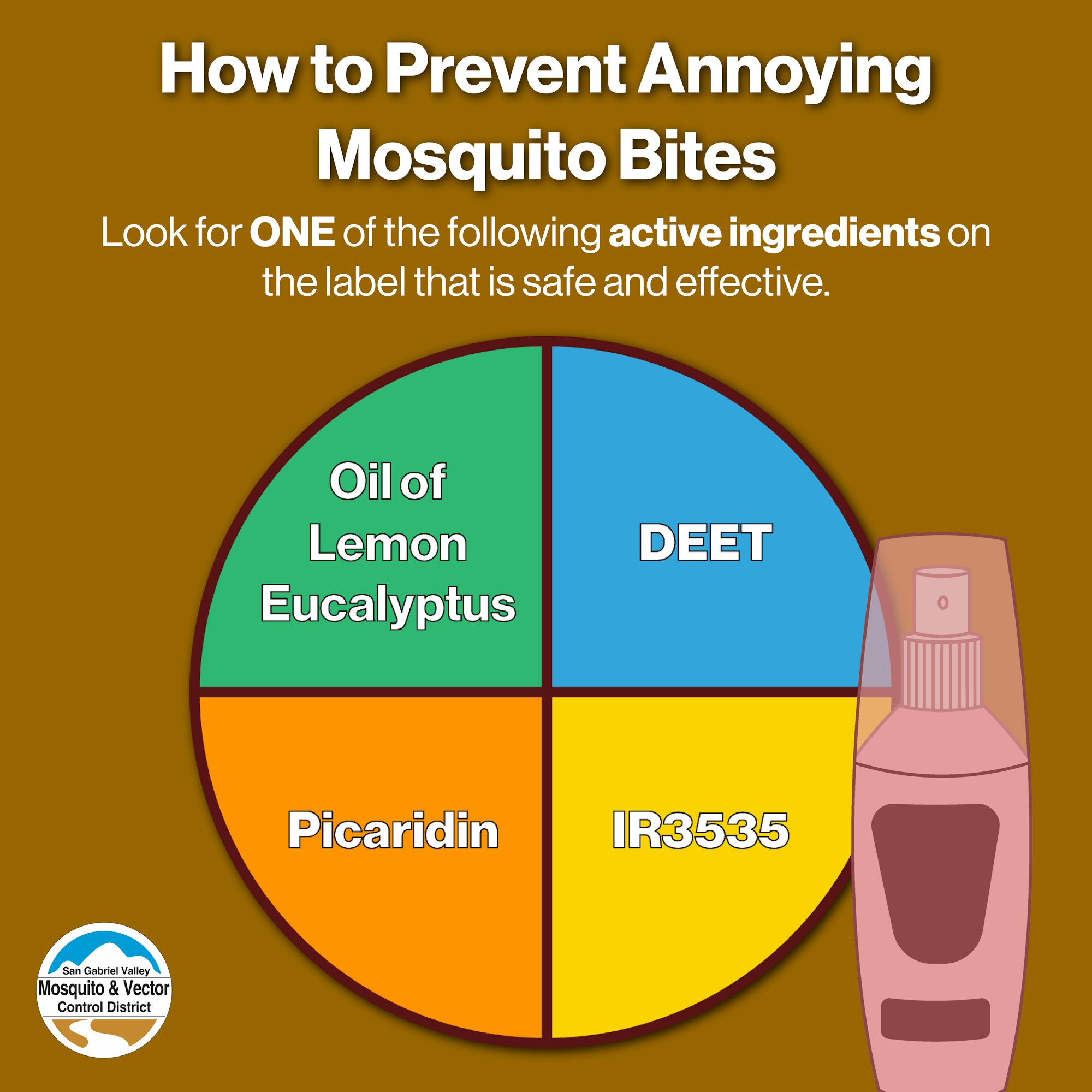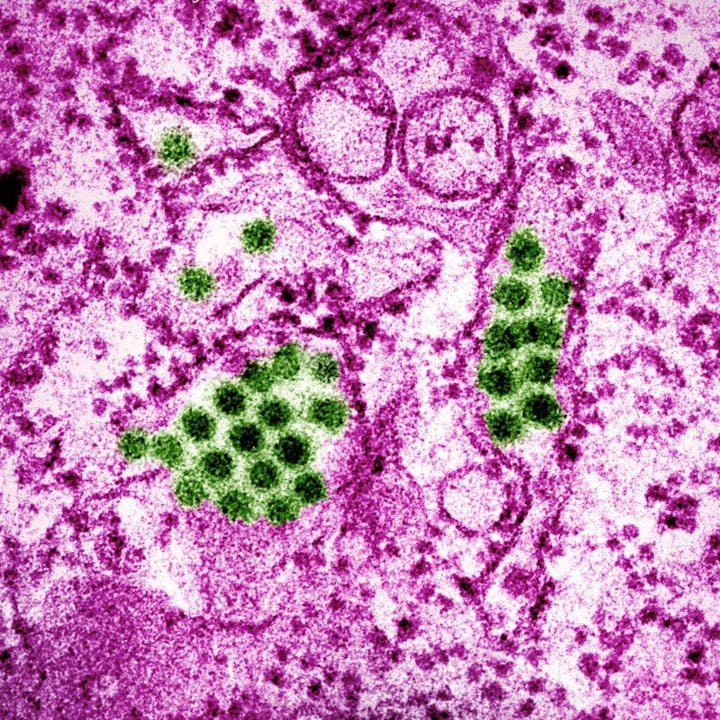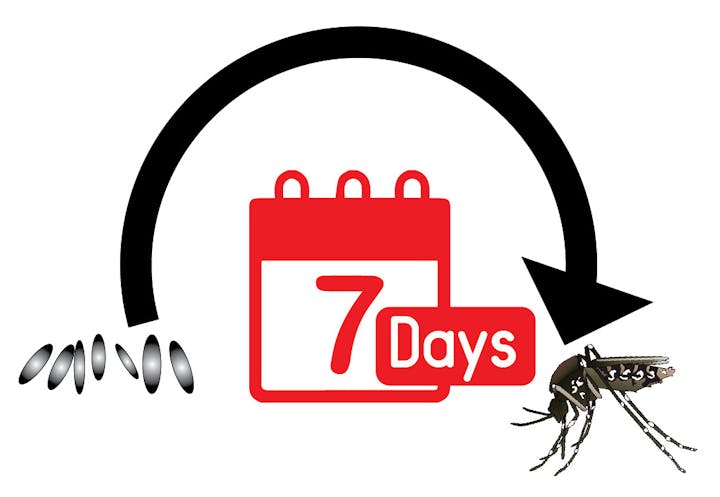West Nile Virus

Mosquitoes spread West Nile virus (WNV) when they bite birds and people. The mosquito species that can transmit West Nile virus are native to Los Angeles County.
West Nile virus is the most pervasive threat in California. The virus is always present in the environment as it cycles between mosquitoes and a wide variety of bird species. In other words, WNV is endemic to where we live.
West Nile affects humans and other animals, but it does not become contagious. Only mosquitoes can carry and spread West Nile virus.

Interactive Learning: How does West Nile virus spread?
Download and play Journey of the Germ on Android or iOS today.
How is the virus spread locally to humans?
The southern house mosquito (Culex quinquefasciatus) is the region's most common vector of West Nile virus. Only certain species of mosquitoes can transmit the virus (a Flavivirus). There is no evidence that the Aedes mosquitoes in L.A. County can spread West Nile virus.
Female mosquitoes pick up the virus when they feed on infected birds. The virus penetrates the mosquito’s gut where it replicates and moves into the salivary glands. It is during subsequent blood-feeding by infected female mosquitoes that transmission of the virus can occur.
People report dead birds they observe in their community. Positive dead birds are an indication West Nile virus is widespread in the region.

What are the symptoms of West Nile virus?
Primary care physicians are usually the professionals who order West Nile virus tests for their patients. Four out of five people will not show symptoms.
Common symptoms:
- Fever
- Nausea
- Head and body ache.
Complications:
- Unfortunately, there are uncommon situations where people experience more severe neurological symptoms as a result of inflammation in the brain and spinal cord (encephalitis). These symptoms may result in paralysis, coma and even death.
There is no cure and no vaccine for people. There is a vaccine available for horses.
Who is at risk?
Everyone in Los Angeles County is at risk of West Nile virus infection, but people over 50 and those with existing health conditions are most at risk of serious illness and long-term health problems.
How can I protect myself from getting this virus?
No human vaccine exists for West Nile virus. The best prevention is to wear mosquito repellent applied directly to all exposed skin. Repellents should contain ONE of the following active ingredients:
- DEET
- IR3535
- Oil of Lemon Eucalyptus (or PMD)
- Picaridin/KBR 3023.
Reduce the mosquito bites by removing stagnant water around the home and eliminating containers that might catch and hold water (even a bottle cap).

How is Mosquito Control staff responding to West Nile virus?
Mosquito control staff's goal is to prevent or stop the spread of West Nile virus. This can be done through testing mosquitoes for disease, education of residents, and control of the mosquitoes. Our staff is trained to first identify sustainable solutions to remove stagnant water and educate the public.
In cases where it is impossible to get 100% compliance from property owners or remove all stagnant water, our state-certified staff provide treatment to stagnant water sources with a material that targets the swimming mosquito larvae.
The use of pesticides against flying adult mosquitoes is a last resort and should only be provided when there is a public health emergency. An emergency can include a cluster of people who tested positive for West Nile virus, unusually higher-than-average mosquito activity, and/or clusters of birds dying from West Nile virus. Providing treatment for flying adult mosquitoes is combined with enhanced surveillance of disease and increased education. This integrated mosquito management strategy (also known as integrated vector management) relies on the shared responsibility of public health with residents.
How did West Nile virus get here?
West Nile virus was first recognized in the West Nile District of Uganda in 1937. It first appeared in the United States in New York in 1999 – most likely carried by an infected stowaway mosquito in a plane or cargo ship. Within four years the virus had swept across the country with the seasonal movement of infected birds and arrived in the Los Angeles area in late 2003.
Current Status of West Nile:

Human cases occur in Los Angeles every year. West Nile virus is now a permanent part of the ecology of local bird and mosquito populations and will never go away.
For more information on West Nile Virus please visit:





.jpg?ixlib=rb-1.1.0&or=0&w=720&h=720&fit=max&auto=format%2Ccompress&s=66a87188d9f9022e8b407ac884110af5)
